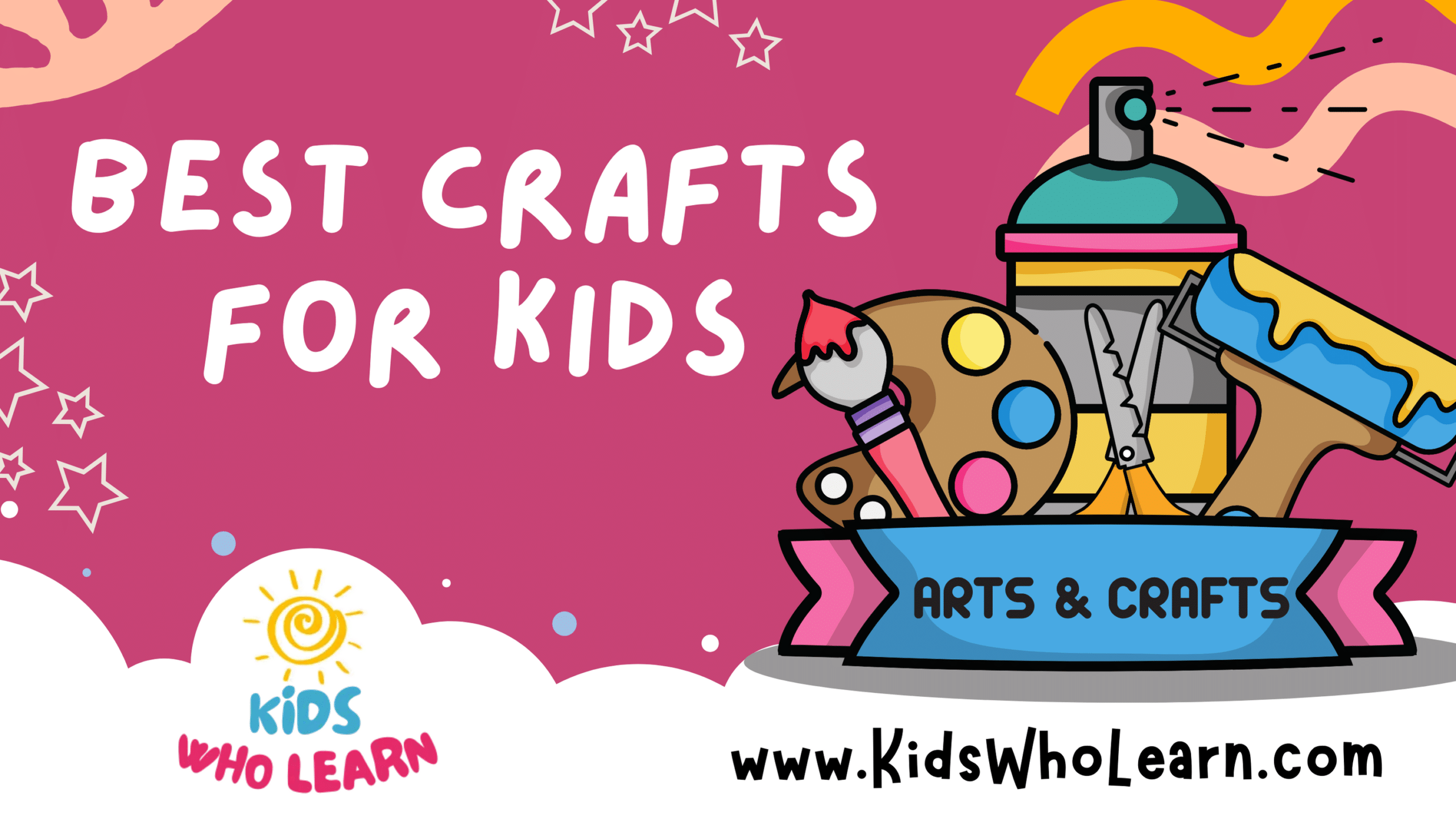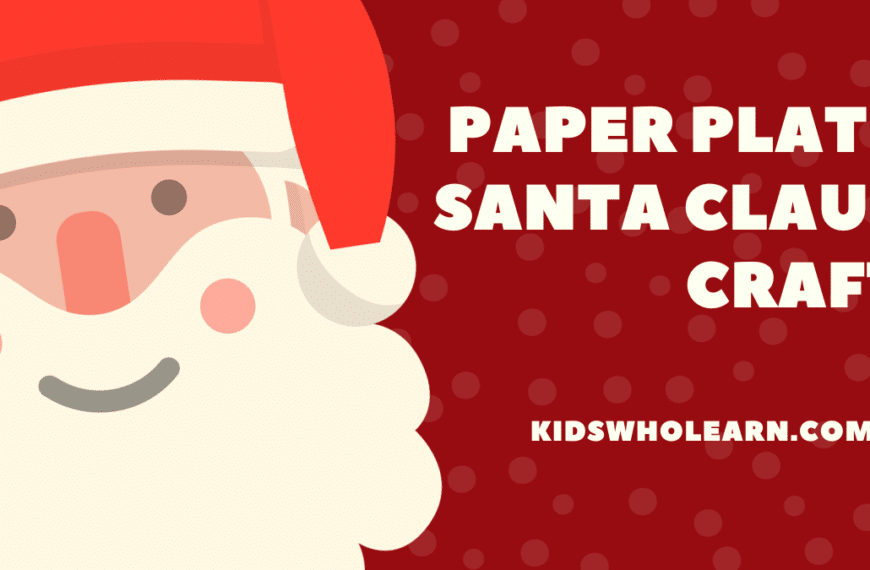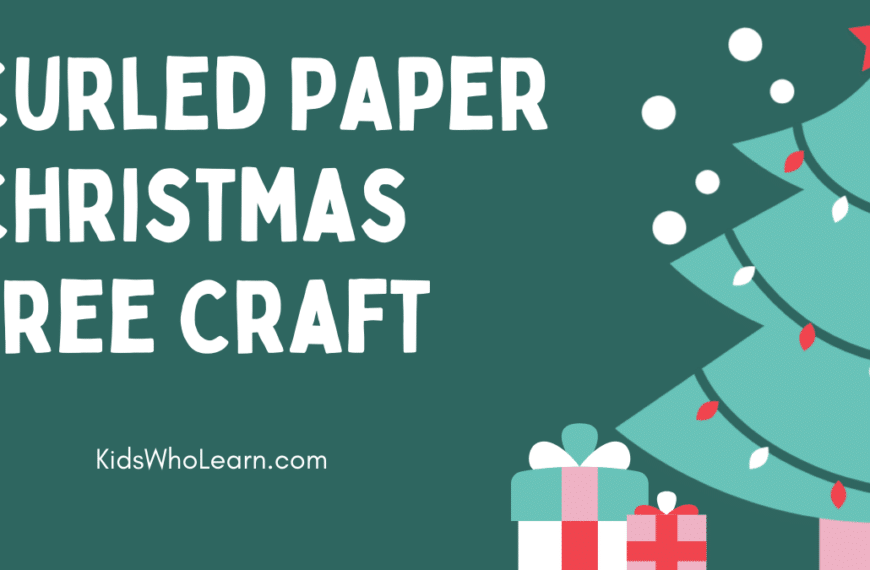Crafting offers a wonderful opportunity for children to express their creativity, develop fine motor skills, and enjoy hours of fun. It’s an engaging activity that both children and adults can partake in, with a vast array of projects that cater to different ages and interests. From simple coloring with crayons to more involved projects like building birdhouses, crafting can be adapted to suit the individual skill level and attention span of each child.
Selecting the right craft is essential for fostering a child’s interest in creative activities. For younger children, it’s important to choose crafts that are age-appropriate, safe, and enjoyable. As they grow, children can be introduced to more complex projects that challenge their abilities and encourage skill development. Seasonal and holiday crafts are a great way to celebrate special times of the year, while recycle-based projects teach the value of sustainability.
Key Takeaways
- Crafting encourages children’s creativity, motor skills development, and enjoyment.
- Age-appropriate crafts ensure safety and maintain children’s interest in creative activities.
- Seasonal and educational projects add variety and learning opportunities to crafting.
Essential Craft Supplies
Equipping your young crafters with the right supplies is the key to nurturing creativity and ensuring a fun and educational crafting experience. Below is a list of materials that form the foundational toolkit for a variety of kid-friendly art and craft projects.
Basic Art Materials
To start any craft project, you’ll need a selection of basic art materials. This should include:
- Markers, Crayons, and Pens: Ideal for drawing and coloring. They come in a range of colors and sizes suitable for different age groups.
- Paintbrushes: Necessary for applying acrylic paint or watercolor to surfaces. Different sizes help create varied textures and details.
- Acrylic Paint: A versatile and washable option perfect for kids. It’s great for painting on paper, fabric, and even paper plates.
Adhesives and Fasteners
When it comes to assembling your crafts, adhesives and fasteners are crucial:
- Glue: Liquid glue is essential for paper projects, while glue sticks are mess-free for younger children.
- Tape: Including both transparent and masking tape, it’s useful for temporary holds or creating clean paint lines.
- Twine and String: For projects involving bundling or hanging, such as making a clothespin puppet.
- Stickers and Googly Eyes: Self-adhesive items for quick decoration without the mess.
Paper and Fabric Basics
Versatility is key in choosing paper and fabric basics. You should have:
- Construction Paper: Available in many colors; it’s the go-to for cutting and assembling shapes.
- Fabric: Pieces of felt or scraps of fabric can be used for texture in projects. Yarn can also be used for weaving or as embellishments.
- Scissors: Safety scissors for kids are important for cutting paper or yarn.
- Pom-Poms and Beads: For adding 3D elements to projects, enhancing their appeal.
Remember, while this list isn’t exhaustive, it provides a solid foundation for a wide array of kids’ crafts. You can always expand your collection with items like buttons, popsicle sticks, pipe cleaners, or glitter to match the enthusiasm and imagination of your young creators.
Crafts for Different Age Groups
Selecting appropriate crafts is important for enhancing fine motor skills, creativity, and hand-eye coordination in children. Consider the child’s age and skill level to ensure an engaging and enriching crafting experience.
Crafts for Preschoolers
- Paper Plate Animals: You can cut paper plates into various shapes for your child to paint and assemble into their favorite animals. This craft promotes creativity and fine motor development.
- Bead Necklaces: Encourage your preschooler to create necklaces or bracelets with large, colorful beads. This activity is excellent for improving hand-eye coordination as they thread the beads.
Crafts for Toddlers
- Sensory Bins: Fill containers with rice, pasta, or beans and provide cups and scoops for your toddler to explore. This play stimulates the senses and builds fine motor skills.
- Finger Painting: Set up a mess-free canvas where your toddler can use their fingers to paint. This allows them to be creative while developing hand dexterity.
Crafts for Older Kids
- DIY Kites: Older kids can construct and decorate their own kites. The process of building a kite enhances their understanding of basic aerodynamics and fosters creativity.
- Clay Modeling: Provide your child with modeling clay to create figures or objects. This craft improves fine motor skills and allows for expressiveness in three dimensions.
Seasonal and Holiday Crafts
Engaging children in seasonal and holiday crafts allows you to explore a variety of festive traditions and helps develop their creativity. These crafts can also serve as wonderful keepsakes and gifts.
Easter Crafts
You’ll need:
- Construction paper
- Washable paints
- Pipe cleaners
- Cotton balls
Easter Egg Painting: With washable paints, you can turn plain eggs into vibrant masterpieces. Use different sized brushes to create intricate patterns.
Bunny Masks: Help your child cut out a mask shape from construction paper and decorate with cotton balls for the bunny’s fur and whiskers made from pipe cleaners.
Handprint Christmas Crafts
You’ll need:
- Green and red construction paper
- Non-toxic paint
- Glitter
- Glue
Handprint Christmas Tree: Use green paint to make handprints on construction paper. Once dry, cut them out and arrange them in a tree shape, starting with the largest at the bottom. Add a touch of glitter for decoration.
Handprint Santa Claus: Paint your child’s palm with red and the fingers with white to represent Santa’s hat and beard. Press onto paper to create a Santa ornament.
Crafting Techniques and Projects
Crafting engages kids’ creativity and teaches valuable skills. Below, explore specific crafting techniques and project ideas tailored for children to foster their artistic abilities.
Paper Crafting
Paper crafts offer a world of creativity that is both accessible and affordable. With items like colored paper, scissors, and glue, you can create a variety of projects.
- Pom-Poms: Attach small paper pieces to a plastic fork and snip the edges to make fluffy pom-poms.
- Pinwheel: Fold paper diagonally, cut towards the center, then attach the corners to a stick to catch the wind.
- Tissue Paper Suncatcher: Lay pieces of colored tissue paper on contact paper, add another layer on top, and cut into shapes.
DIY Projects
Do-it-yourself projects for kids blend fun with hands-on learning. These activities can use everyday items to construct something unique.
- Pasta Necklace: String colored tube pasta onto yarn to create wearable art.
- Glue Batik: Draw designs on fabric with glue, dye it, then wash out the glue to reveal patterns.
- DIY Pinata: Cover a balloon with paper mâché, decorate, and fill with treats for a festive project.
Fashioning Ornaments
Creating ornaments can be a delightful way for kids to contribute to household decorations and develop fine motor skills.
- Simple Bead Ornaments: String beads onto wire and bend into shapes like stars or hearts.
- Salt Dough Figures: Mix flour, salt, and water to make dough, shape it, then bake and paint for lasting ornaments.
Creative Play and Educational Crafts
Engaging in creative play and educational crafts is an effective way to enhance learning through practical activities. Children can explore various textures, colors, and techniques while developing essential motor skills.
Color and Texture Exploration
With simple materials like pasta necklace crafts and cupcake liners, you can introduce your child to a variety of colors and textures. A pasta necklace involves painting or dying pasta pieces and stringing them together, fostering color recognition and pattern creation. Using cupcake liners for crafts can teach about symmetry and shapes as you transform them into flowers or animals.
- Pasta Necklace: Color, dry, and string pasta for a tactile and visual experience.
- Cupcake Liner Crafts: Flatten or fold liners to create dimensional art pieces.
Motor Skills and Coordination
Crafts such as the handprint witch, paper bag kite, craft stick airplane, and fluffy slime are excellent for improving fine motor skills and hand-eye coordination. For the handprint witch, you’ll paint your hand and press it onto paper to create the witch’s body, then add details with a brush. To make a paper bag kite, you’ll need to decorate and assemble it, then attach a string to fly, challenging coordination and construction skills.
- Handprint Witch: Paint your hand, press onto paper, and add facial features.
- Paper Bag Kite: Decorate, assemble, and attach string to create a functional kite.
- Craft Stick Airplane: Glue craft sticks together in an airplane shape and paint for a lesson in engineering and dexterity.
- Fluffy Slime: Mix glue, shaving cream, and activator for a sensory experience that encourages kneading and molding.
In addition, recipes for homemade sidewalk chalk paint engage kids in a dual learning activity where they can create the paint themselves then use it to draw outdoors, merging art with practical skill application.
- Sidewalk Chalk Paint: Combine cornstarch, water, and food coloring to concoct your own paint, then use it to create artworks on the pavement.
Organizing and Storing Craft Supplies
When setting up your craft space, keeping supplies organized and accessible is key. Utilize clear, labeled bins and containers to store similar items together. This helps in recognizing craft supplies at a glance and maintaining order.
Sorting Supplies:
- Paper Products: Separate colored paper, cardstock, and specialty papers into file organizers or document holders.
- Writing Instruments: Group pens, markers, and crayons in upright containers or drawers dividers.
- Adhesives: Line up glue sticks, bottles, and tape in a flat storage bin for easy retrieval.
- Tools: Store scissors, punches, and rulers together in a tool caddy or pegboard.
Labeling System:
Create a simple labeling system using tags or stickers to mark the contents of each bin. It’s beneficial to involve kids in this process to familiarize them with the organization system.
Accessibility:
Ensure the storage system is within reach for children. Use shelves and drawers at a low height so your young crafters can easily take and return items.
| Supply Type | Storage Solution | Accessibility Point |
|---|---|---|
| Beads & Sequins | Small jars with lids | Kid-level Shelf |
| Paints & Brushes | Washable containers | Low drawers |
| Fabric & Yarn | Bins with dividers | Accessible baskets |
Rotate and review your supplies regularly to discard dried out or empty containers. This helps in keeping the craft area inviting and in ensuring supplies are fresh and ready for use.
Craft Safety and Cleanup
When engaging in crafts with children, safety is paramount. Ensure that your workspace is equipped with materials like rubbing alcohol and paper towels for effective cleanup of surfaces and materials. Rubbing alcohol is excellent for removing residues from various craft supplies and is especially useful for cleaning up after using permanent markers or inks.
Hot glue guns are common in craft projects, but they must be handled with care to prevent burns. Always supervise children when hot glue is in use and keep a bowl of cold water nearby to treat minor burns immediately.
Here’s a quick safety checklist and cleanup tips:
Safety:
- Adult Supervision: Always have an adult present when children are using hot glue or sharp tools.
- Read Labels: Check for non-toxic labels on supplies like glue and paint.
- First Aid: Keep a first aid kit handy in case of accidental cuts or burns.
Cleanup:
- Rubbing Alcohol: Use to clean sticky residues from scissors and work surfaces.
- Prompt Cleaning: Encourage children to wipe up spills immediately with paper towels to avoid slips.
- Storage: Store hot glue guns out of reach when not in use and ensure they are cool before putting away.
Maintaining a tidy workspace not only makes crafts more enjoyable but also instills good habits in young crafters. Remember, taking the necessary precautions allows for a fun and safe crafting experience for everyone involved.
Crafts for Group Activities
Crafting together not only enhances creativity among kids but it also fosters teamwork and social skills. In this section, you’ll find craft project ideas that are perfect for community settings or classroom environments, allowing kids to collaborate and learn collectively.
Community Projects
When you’re tackling community projects, consider creating large-scale murals with washable paints or chalk on communal areas like playgrounds. Each child can add their own touch to the bigger picture. Similarly, cooperative garden mosaics using broken tiles or stones can beautify a shared space.
- Mural Painting
- Materials: Large roll of paper or wall space, washable paints, brushes, painter’s tape.
- Process: Assign sections or themes to groups of children to contribute to the overall design.
- Garden Mosaic
- Materials: Stones or broken tiles, outdoor-safe adhesive, a designated garden spot.
- Process: Kids place stones or tiles to fill a shared pattern or design.
Classroom Crafts
In the classroom, decorated lunch bags become a delightful project for special events or daily use. Get your hands on plain paper lunch bags and personalize them with washi tape, stickers, or drawings. Recycled crafts using egg cartons can also be educational and eco-friendly. Transform egg cartons into creatures, vehicles, or planters.
- Decorated Lunch Bags
- Materials: Plain paper lunch bags, washi tape, stickers, markers.
- Instructions:
- Choose the bag’s theme.
- Decorate using tape, stickers, and markers.
- Recycled Egg Carton Crafts
- Materials: Egg cartons, paint, scissors, glue.
- Examples:
- Creatures: Cut and shape cartons into animals, then paint.
- Planters: Use individual cups for seedlings, decorate the exterior.
Remember to always supervise craft sessions to ensure safety and step in where guidance is needed.
Upcycling and Eco-Friendly Crafts
Introducing children to upcycling and eco-friendly projects not only sparks creativity but also instills a sense of environmental responsibility. These crafts give a second life to items that would otherwise be waste.
Recycled Material Crafts
Paper Rolls: Transform your empty paper towel and toilet paper rolls into imaginative creations. With a few simple cuts and some paint, you can craft them into whimsical characters, or with a bit of glue and creativity, assemble a complex structure or scene. It’s a great way to teach kids about reusing materials creatively.
- Materials Needed:
- Empty paper rolls
- Non-toxic paint or markers
- Scissors
- Glue
- Optional: Googly eyes, fabric scraps, sequins
- Step-by-Step Guide:
- Collect empty paper rolls.
- Design your craft (e.g., animal, car, building).
- Cut the paper rolls as needed for your design.
- Decorate using paint, markers, and any additional embellishments.
- Assemble parts using glue and let dry.
Tip: To make your craft sturdier, you can reinforce joints with tape or use double-sided tape for a cleaner look.
By focusing on simple materials like paper rolls, you can help kids learn the importance of resourcefulness and environmental stewardship through enjoyable and educational crafts.
Craft Resources and Inspiration
When searching for crafts and craft ideas for kids, your local library is an abundant source of books filled with engaging projects. Look in the arts and crafts section to find age-appropriate books that can spark your child’s creativity.
Online platforms like Pinterest are treasure troves of craft ideas. You can search by categories such as “Kids Crafts” or “Easy Craft Ideas for Children” to find visuals and step-by-step tutorials tailored to your needs. Remember, though, to supervise online activities and choose ideas that are safe and suitable for your child’s age.
Websites to Explore:
- DLTK’s Crafts for Kids – Offers a variety of craft projects, categorized by holiday, material, and theme.
- FirstPalette – Features craft ideas along with printable templates and detailed instructions.
- Activity Village – Provides a plethora of craft resources along with coloring pages and worksheets.
Crafting Supplies:
Basic Supplies:
- Construction paper
- Safety scissors
- Glue sticks
- Crayons
- Watercolor paints
- Brushes
Expanded Collection:
- Pipe cleaners
- Beads
- Pompoms
- Felt
- Fabric scraps
- Stamps and ink pads
Crafting kits can also be a convenient source of inspiration and all-in-one solutions. These often include everything you need for a specific project and are especially useful for trying out new types of crafts without investing in a lot of materials.
Remember to encourage your child to think outside the box and use materials you have around the home. Recycled items like egg cartons, cardboard tubes, and old magazines can transform into amazing works of art with a bit of imagination. Your guidance and enthusiasm will fuel their creativity, making the crafting experience rewarding for both of you.
Conclusion
Crafting offers numerous benefits for children, encouraging creativity, fine motor skills development, and cognitive growth. It’s important to choose projects that are age-appropriate and engaging.
- Safety: Always prioritize safety. Use non-toxic materials and age-appropriate tools.
- Simplicity: Start with simple crafts to build confidence.
- Education: Incorporate educational elements subtly.
- Variety: Introduce a diverse range of crafts to broaden skills.
Remember that the journey is as important as the finished product. Encourage your children to enjoy the process and learn from their experiences rather than focusing solely on the outcome.
Lastly, regularly replenish craft supplies to maintain interest and possibility for creativity. With the right approach, crafting can become a beloved activity with beneficial outcomes for your children.
Frequently Asked Questions
Crafting with kids can lead to wonderful learning opportunities and creative expression. These FAQs cover a variety of activities suitable for different ages and seasons.
What are some simple craft activities that are suitable for 5-year-old children?
For 5-year-olds, consider crafts that enhance fine motor skills. Collage making with glue sticks and textured materials, or crafting pasta necklaces with dyed macaroni, can be both fun and educational.
What Christmas crafts can children engage in for holiday activities?
Children can create festive crafts like paper plate Santas, construction paper wreaths, or cotton ball snowmen. These activities are not only enjoyable but also decorate your home for the holidays.
Can you suggest easy paper crafts that kids can enjoy?
Paper crafts are wonderful due to their simplicity and accessibility. Origami, paper mosaics, and homemade greeting cards are excellent choices that only require paper and imagination.
What types of crafts are appropriate for kids between 5 to 7 years old during the summer?
During summer, appropriate crafts include sidewalk chalk art, painted rocks, and flower pressing. These projects encourage outdoor play and exploration of nature.
Where can I find printable craft activities for children?
Printable craft activities are widely available online. Educational websites and parenting blogs often offer a variety of printouts, from coloring pages to paper toy templates.
Are there craft kits that cater to a child’s creativity while being age-appropriate?
Yes, a multitude of craft kits are designed for specific age ranges, ensuring materials are suitable and instructions are easy to follow. These kits can range from pottery making to simple electronics.











